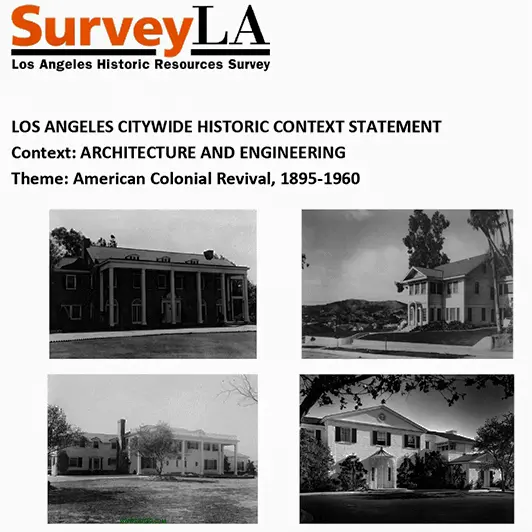One of the most frequently produced and enduringly popular styles in the United States is the Colonial Revival style. The Colonial Revival style can be found in a seemingly endless variety of forms throughout the United States and continues to influence residential architecture today. Basically, the Colonial Revival style was an attempt to look back to the Federal and Georgian architecture of the American founding period for design inspiration.
Although less common, the post-medieval English Colonial and Dutch Colonial housing forms also influenced the Colonial Revival style. The enthusiasm for exploring the architecture of the American Founding Erawass purred by the Philadelphia Centennialcelebrationofthe100th anniversary of the founding of the United States in 1876. This trend was further encouraged by the1893 World’s Columbian Exposition in Chicago.
The Colonial Revival style, like many Revival styles, was not a direct imitation of earlier styles. However, in the early years of the 20th century (1915-1935), there was great interest in studying and imitating Georgian architecture. In general, the Colonial Revival style incorporated certain design elements such as symmetry of the front façade, fanlights and side lights at the front entrance, pedimented doorways, porches, and dormers, and applied them to larger buildings. These Colonial-era details could be combined in a great variety of ways, creating many subtypes within this style.
About the Book
The theme “The American Colonial Revival, 1895-1960” examines the various architectural styles that honored the United States and its colonial origins. The movement drew inspiration from18th century American architecture, which was directly influenced bymid-18th century Britain, where Palladianism was dominant, and by the architecture of ancient Greece and Rome.
British architects were inspired by archaeological discoveries in the ancient world. Asaresult, there was a greater emphasis on proportions and design elements that were more faithful to ancient architecture than in previous periods. In the United States, they often borrowed directly from European architectural books published during this period. The Georgian style, and later the Federal style, became popular, and the most elaborate and faithful reproductions were made all over the East Coast.
The Centennial International Exposition in Philadelphiain1876 sparked a renewed interest in colonial culture and design. However, it was the 1893 World’s Columbian Exposition in Chicago that introduced the American Colonial Revival architecture to the American public. The American Colonial Revival movement tended to borrow elements from earlier prototypes, even mixing elements from several buildings within the same design. The early ones tended to incorporate more closely the18th century proto types, while the later ones were more simplified.

